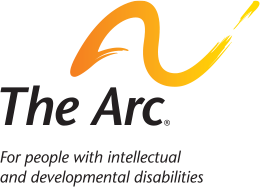Historic Medicaid Cuts Are on the Table This Week. Here’s What People With Disabilities Need to Know.
Last night, staff of the House Energy and Commerce Committee released their draft budget plan that outlines how they will cut Medicaid—and it’s moving fast. The committee will debate it this week.
Let’s be clear: This proposal threatens the health and independence of millions of people, including people with disabilities, children, older adults, and caregivers. If this bill becomes law, states will be forced to make impossible decisions that would gut essential services—and an estimated 13.7 million will lose coverage.
“People with disabilities will suffer if these proposals become law. It will mean people with disabilities ending up in emergency rooms instead of getting preventive care. It will mean people being forced to live in institutions or become homeless. It will mean caregivers unable to support their loved ones. It will mean states not having the tools they need to respond to local needs. Medicaid is not just a line item in a budget—it’s lifeline. We will not stop until members of Congress understand the harm these proposals will have on the people with disabilities,” said Katy Neas, CEO of The Arc of the United States.
What’s in the proposal?
Work requirements that put up red tape instead of support. These are cuts in disguise. Congress says they only apply to “able-bodied” adults. That vagueness puts people with disabilities and chronic conditions at risk. We’ve seen this before: Arkansas tried it, and thousands lost coverage—not because they didn’t work, but because they couldn’t navigate confusing rules.
Eligibility checks every six months instead of once a year. That might sound small, but it’s not. The health of millions of people will be impacted. When eligible people lose coverage due to red tape, they are more likely to end up in an emergency department due to complications from untreated chronic conditions. Red tape and paperwork will cause eligible people to lose coverage, including people with disabilities who rely on Medicaid for health care, home care, and the support they need to live in their communities. This will also unnecessarily increase Medicaid administrative expenses for states, who will have to figure out how to pay for and administer checks, diverting funding away from beneficiaries.
Higher costs for people who can least afford it. The plan raises doctor visit co-pays for people just above the poverty line, around $15,650/year for a single person. Even small cost increases force people to skip care, delay treatment, and risk emergencies.
Big federal cuts passed off to states. This bill doesn’t just shift dollars—it shifts risk. States would be forced to redesign their entire Medicaid programs on the fly or cut services. Every state would face the same reality: fewer resources, more complexity, and less flexibility to meet people’s needs.
What’s next?
The House Energy and Commerce Committee is marking up the bill this week. If approved, the House of Representatives and the Senate would have to vote on it before it would go to the President for his signature.
The Arc has been fully focused on the fight against Medicaid cuts since they became apparent last fall—and we’ll keep fighting. We need every voice raised to stop this before it’s too late.








